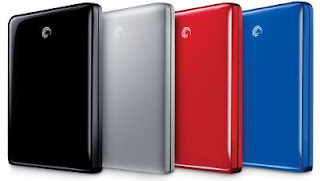Seagate GoFlex Slim portable hard drive svelte, 9mm, 2.5-inch external drive is designed for the latest trend of portable, thin, stylish laptops and netbooks. The product is now available through the Seagate distribution channels and at select retail outlets. A 320GB version of the GoFlex Slim drive can be purchased for a manufacturer’s suggested retail price of INR. 4500.00.
At an ultra-sleek 9mm—38 percent leaner than the current GoFlex ultra-portable drives—the new GoFlex Slim drive is roughly the width of a pencil. Sliding effortlessly into a pocket, purse or messenger bag, the GoFlex Slim portable drive enables transport, access and enjoyment of personal digital content from anywhere, making it the perfect complement to today’s mobile lifestyle. Equipped with a 7200RPM drive and a USB3.0 interface to accelerate transfer speeds up to 10x faster than USB2.0, this attractive super-slim drive delivers quick access to large, multi-media files such as HD movies and video games.
The faster drive speed takes full advantage of the included plug-and-play USB 3.0 interface, while still maintaining compatibility with USB 2.0 ports. The GoFlex Slim portable drive also allows for use between Windows and Mac computers, interchangeably, without formatting or performance loss. Additionally, the drive’s included premium backup software provides automatic and continuous backups and encrypts files and folders.
According to IDC, tablets, mini-laptops and netbooks are largely seen as secondary PC devices and are primarily used for information “grazing,” or as vehicles of content consumption. Additionally, tablets, mini-notebooks and netbooks have very limited on-board storage requiring them to have access to additional storage, whether it is local attached, networked or from the cloud. The GoFlex Slim drive enables people to easily sync files between their computer and the drive, so that they can easily store, transport and enjoy hundreds of DVD-quality movies, hours of digital video, and multiple-thousands of photos or digital music while on-the-go.






